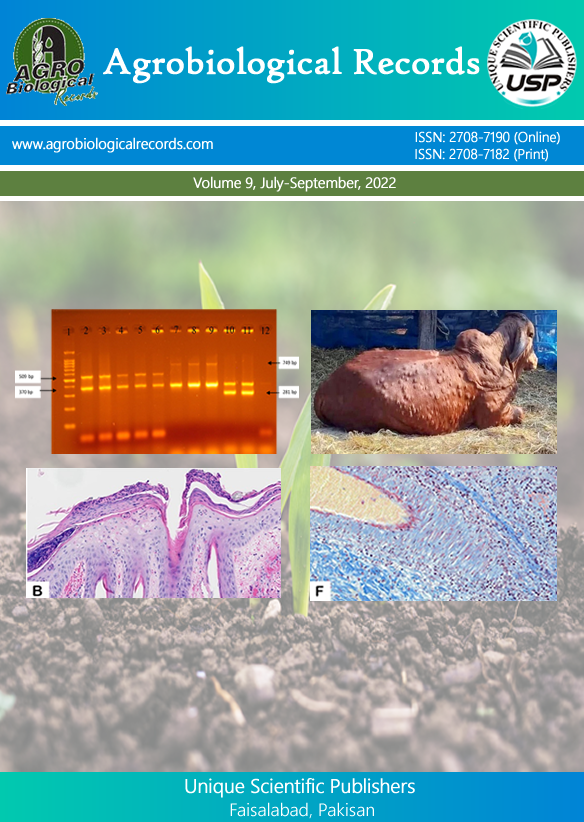
Muhammad Mubeen Sajjad 1, Majeeda Rasheed 2,*, Waqas Farooq 1, Farkhanda Yasmin 3, Safia Niaz 2 and Tahir Yaqub 4
1Faisalabad Institute of Research Science and Technology, Faisalabad, Pakistan; 2Department of Life Sciences, Khwaja Fareed University of Engineering and Information Technology (KFUEIT), Rahim Yar Khan, Pakistan 3Department of Biosciences and Technology, Khawaja Fareed University of Engineering and Information Technology (KFUEIT), Rahim Yar Khan, Pakistan 4Department of Microbiology, University of Veterinary and Animal Sciences (UVAS), Lahore
*Corresponding author: majeeda.rasheed@kfueit.edu.pk
H9N2 avian influenza outbreaks have caused great economic losses to the poultry industry in recent decades due to decreased egg production, high morbidity, and mortality. Due to different antigenic variants, the influenza virus has become problematic because it can cross the species barrier. As it is highly pathogenic, its diagnosis and vaccines are highly important. Hemagglutination inhibition (HI) test is mostly used for subtyping and detecting antibody titer against the virus. Furthermore, its continuous mutations in the HA gene transforms AIV subtype H9N2 (a low pathogenic subtype) into high pathogenic virus subtypes like H5N2 and H7N7 that may have pandemic potential. Thus, it is necessary to identify various antigenic variants of the influenza virus, so it is needed to study the HA gene, its attachment to host receptors, the release of genetic material, and pathogenicity. In the present study, virus samples from poultry were isolated. Both serological and molecular confirmation was carried out for 100 samples collected from a different area. They were properly labeled and prepared for the process of egg inoculation in embryonated eggs. The virus was grown in the amnioallantoic membrane of embryonated eggs, and harvested fluid then proceeded for confirmatory testing. Did hemagglutination and hemagglutination inhibition testing. RNA was extracted by the kit method, and cDNA was synthesized. Reverse transcriptase (RTPCR) was performed using specific primer sets, and then ran the PCR product on the agarose gel. Then sent bands obtained for sequencing.